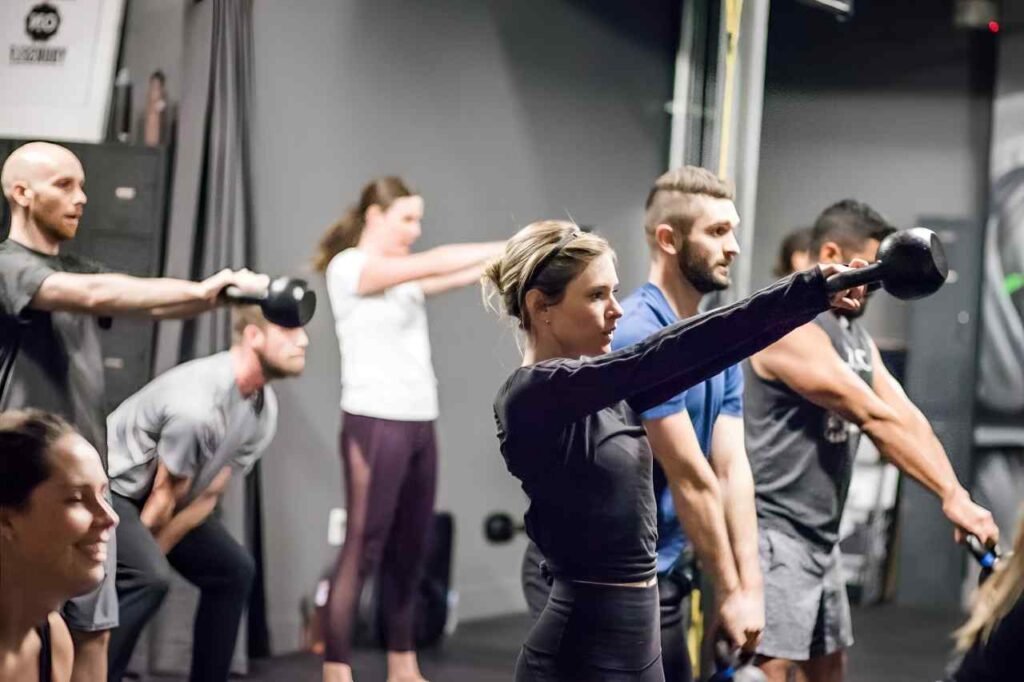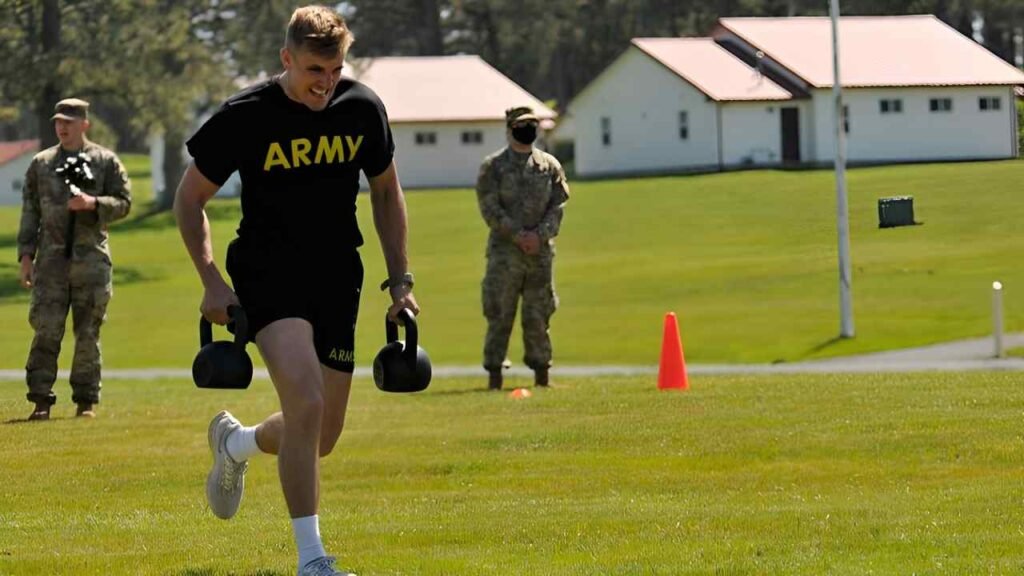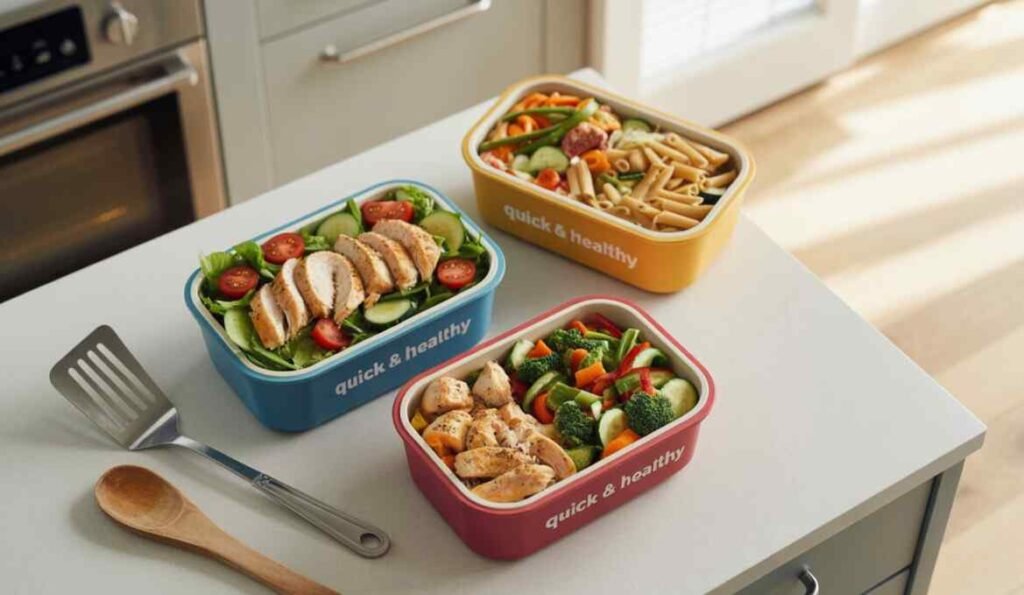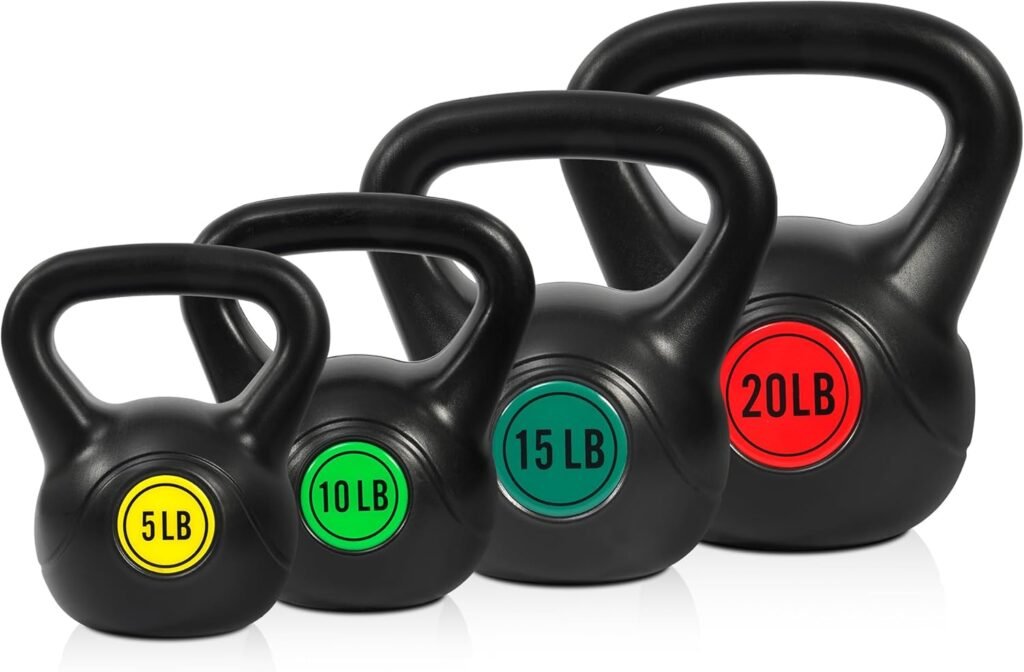You need to strengthen your core. Why? A strong middle helps you move more easily. It protects your back. Plus, it makes things easy to do every day. Kettlebells are wonderful for working out your core. These circular weights with handles carry a punch. They worked out a lot of muscles at once. The best part is that you can use them anywhere.
What is it about your core that makes it so important?
Your core is more than abs. It involves deep muscles around your spine. These muscles function together like a team. They support your complete body. Think about it. Every move you make starts from your center. Walking uses your core. So does lifting bags. Even sitting demands core strength. A weak midsection brings complications. Back pain generally originates from weak core strength. Bad posture happens too. Sports performance diminishes as well. However, a solid core alters everything. You stand taller. Movement feels smooth. Pain goes away. Energy levels grow.
Why Choose Kettlebells for Core Training?

Regular weights work one muscle at a time. Kettlebells are different. They force numerous muscles to operate together. This builds real-world strength. The shape matters too. The weight sits away from the handle. This provides an unequal pull. Your core must work harder to keep balanced. Kettlebell core workout sessions burn lots of calories. The movements are big. They use your whole body. This helps fat loss faster. Time is valuable. Kettlebells save time. One tool works your entire core. No need for ten different machines.
Getting Started: What You Need to Know
First, pick the correct weight. Men frequently start with 35 pounds. Women normally begin with 18 pounds. Too heavy? Go lighter. Form beats weight every time. Safety comes first. Clear space around you. Kettlebells swing wide. Check your grasp before each move. Sweaty hands drop weights. Warm up before you start. Cold muscles get damaged easily. March in place for two minutes. Do some arm circles. Twist your body lightly. Learn the basics first. Master easy moves before challenging ones. Good form prevents injuries. It also makes exercises work better.
The Essential Kettlebell Core Moves
Russian Kettlebell Swings

This move is king. It exercises your complete core plus more. Start with feet wide. Hold the kettlebell with both hands. Hinge at your hips. Let the weight swing between your legs. Then thrust your hips forward. The kettlebell swings up to chest height. Your core stays tight the whole time. Don’t use your arms to lift. Hip power performs the work. This protects your back. Do 15 swings. Rest 30 seconds. Repeat three times.
Turkish Get-Up
This exercise is complex but great. It works every core muscle you have. Plus, it teaches bodily control. Start lying down. Hold the kettlebell above with one arm. Keep your eyes on the weight. Now rise up without dropping it. The path is tough. Roll to your side first. Push up to sitting. Then climb to standing. Reverse the steps to go down. Start with light weight. Learn the pattern slowly. Speed comes later with practice. Do three get-ups per side. Take your time. Quality beats speed here.
Kettlebell Windmill
This move stretches and strengthens at once. It hits your side muscles hard. Balance gets better too. Hold the kettlebell overhead. Keep your arm straight. Now hinge to one side. Reach toward the floor with your free hand. Your core helps to keep you stable. The weight wants to pull you over. Fight against this pull. Go slow and controlled. Feel the stretch in your side. Come back up smoothly. Perform five windmills per side. Focus on fluid movement.
Goblet Squat
Hold the kettlebell at chest level. This is termed goblet position. The weight challenges your core differently. Squat down like sitting in a chair. Keep your chest up. The kettlebell tries to drag you forward. Your core stops this. Drive through your heels to stand up. Squeeze your glutes at the top. This protects your lower back. Complete 12 squats. Rest between sets. Good form is crucial.
Single-Arm Farmer’s Walk
Pick up one kettlebell. Hold it at your side. Now walk ahead for 30 steps. The unequal weight wants to tip you over. Your core muscles battle to keep you straight. This builds great strength. Keep your shoulders level. Don’t lean to any side. Take normal steps. Switch arms and repeat. This balances both sides equally.

Advanced Kettlebell Core workout
Once simple moves become effortless, try harder ones. These exercises challenge your core more. They build elite-level strength.
Bottoms-Up Press
Hold the kettlebell upside down. The bottom faces up, handle down. This grasp is highly shaky. Press the weight overhead. Your core works overtime to retain equilibrium. Every little muscle fires up. Start light with this one. The challenge is great. Even strong folks utilize small weights here. Do five presses per arm. Control is everything here.
Kettlebell Renegade Rows
Start in push-up position. Hold two kettlebells as handles. Your body creates a straight line. Row one kettlebell up to your ribs. Keep your hips level. Don’t twist your body. This demands considerable core strength. Lower the weight back down. Then row with the other arm. Alternate back and forth. Complete six rows per side. Quality form matters most.
Fitvids Wides Grip 3-Piece or 4-Piece Kettlebell Exercise Fitness
price: 44$
Around the World
Hold one kettlebell with both hands. Circle it around your waist. Go one direction, then the other. This sounds easy but isn’t. Your abs help to keep you stable. The moving weight produces confusion. Pass the kettlebell neatly behind your back. Keep your feet planted. Don’t twist your spine too much. Do ten rounds each direction. Start slow until you get it.
Building Your Kettlebell Core Workout Plan

Beginners require structure. Start with three workouts each week. Monday, Wednesday, Friday work great. Rest days help muscles recuperate. Each session lasts 20-30 minutes. That’s plenty for fantastic outcomes. Longer workouts can entail bad form. Pick three to four exercises per session. Do them in order. Rest between exercises as needed. Week one might look like this:
Russian swings: 3 sets of 10
Goblet squats: 3 sets of 8
Farmer’s walks: 3 sets of 20 steps each arm
Turkish get-ups: 2 sets of 2 each side
Add extra reps each week. Increase weight when exercises feel effortless. Progress keeps results flowing.
Proper Form and Safety Tips
Good form prevents injuries. It also makes exercises work better. Here are crucial items to note. Keep your core tight during every move. Breathe out when you lift. Breathe in when you lower. Never round your back under load. This hurts your spine. Chest up, shoulders back instead. Control the weight at all times. Don’t let it control you. Smooth movement is the goal. Listen to your body. Sharp pain means cease immediately away. Muscle burn is typical. Joint discomfort is not. Start each workout with a warm-up. End with mild stretching. This prevents discomfort and damage.
Common Mistakes to Avoid
Using too much weight too quickly is mistake number one. Ego lifting leads to harm. Start light and progress slowly. Rushing through movements costs time. Slow, controlled reps perform best. Quality always beats quantity. Holding your breath during lifts is risky. It elevates blood pressure. Keep breathing during each action. Ignoring discomfort is unwise. Your body cautions you for good cause. Rest when anything hurts. Skipping warm-ups seems like a time saver. Actually, it leads to injury. Always prepare your body first.
Nutrition for Core Strength

Exercise alone won’t give you visible abs. Diet has a big part also. You can’t out-train a lousy diet. Eat plenty of protein. It develops and restores muscle. Aim for one gram per pound of body weight. Complex carbs fuel your workouts. Choose oats, rice, and potatoes. Avoid sugary snacks and drinks. Healthy fats are important too. Nuts, avocados, and olive oil work nicely. They help hormone production. Stay hydrated all day long. Water helps muscles perform properly. Aim for half your body weight in ounces everyday.
Tracking Your Progress
Keep a workout log. Write down exercises, sets, and reps. This indicates your improvement over time. Take shots from the front and side. Changes happen slowly. Pictures help you see progress. Measure your waist weekly. Use the same area each time. Core strength often reduces waist size. Notice how you feel day to day. Better posture is an excellent indicator. Less back pain signals improvement too. Set minor targets along the way. Maybe five additional swings or heavier weight. Small wins produce large outcomes.
Adding Variety to Your Routine
Your body adapts to the same exercises. Mix things up every couple weeks. This continues growth coming. Try different rep ranges. High reps improve endurance. Low reps with heavy weight generate power. Change your workout timing. Morning sessions fuel your day. Evening workouts help you unwind. Combine kettlebell moves into circuits. Do three exercises back-to-back. Rest after completing all three. Add other tools sometimes. Resistance bands work well with kettlebells. So do bodyweight exercises.
Signs You’re Getting Stronger

Your kettlebell core workout will show results. Here’s what to watch for as you progress. Daily tasks get easier. Carrying groceries feels light. Getting out of bed requires less effort. Your posture improves naturally. You stand taller without thinking. Back pain diminishes away slowly. Athletic performance rises up. Running feels smoother. Other sports get easier too. Energy levels rise during the day. You feel more alert. Fatigue hits later than before. Confidence grows with your strength. You feel capable of more. This affects all spheres of life.
When to Increase Difficulty
Your body informs you when it’s ready for more. Here are clear signs to level up. Current weights feel quite light. You could do many more reps easily. Form maintains flawless throughout. Recovery time gets shorter. You’re not sore the next day. Energy returns fast after workouts. You master proper form perfectly. Every rep looks the same. Balance improves noticeably. Boredom sneaks into your routine. Workouts feel too easy. You need more difficulty. Time for harder exercises or bigger weights. Progress requires ongoing challenge.
Creating a Home Gym Setup
You don’t need a pricey gym for great kettlebell core workout sessions. A modest room at home works nicely. Clear an area eight feet by eight feet. This allows area for swings and walks. Move furniture as needed. Get a rubber mat for the floor. This protects both floor and kettlebell. It also helps your grip. Start with one or two kettlebells. Different weights allow you progress. Most folks need 15-35 pound range. Good illumination helps you see correctly. Natural light works best throughout day. Bright bulbs help at night. Ventilation keeps you comfortable. Open windows or use a fan. Fresh air makes workouts better.
The Mental Benefits
Strong cores build more than physical strength. Mental benefits come too. These might surprise you. Confidence surges as you gain stronger. Lifting hefty weights displays your capability. This carries across everywhere. Stress slips away during strenuous workouts. Physical struggle clears mental clutter. You feel calmer afterward. Focus improves with complex motions. Turkish get-ups need great attention. This skill transfers to work. Discipline grows via constant training. Showing up when you don’t feel like it creates character. Achievement feels fantastic when you hit goals. This joyful emotion inspires other life aspects.
Conclusion
A strong core alters everything about how you move and feel. Kettlebell core workout regimens offer the best answer for busy people. These flexible gadgets work numerous muscles at once. They save time while offering remarkable outcomes. Start with basic movements like swings and squats. Master appropriate form before adding weight or intricacy. Consistency matters more than perfection. Three workouts per week will alter your core strength. Remember that development takes time. Your body requires weeks to adapt and develop stronger. Trust the process and stay patient. The results will come if you persist with it. Safety should always come first. Listen to your body and rest when needed. Good form prevents damage and maximizes results. Start light and progress gradually. Your kettlebell core training adventure begins with a single session. Take that initial step today. Your stronger, more confident future self will thank you.
Frequently Asked Questions
How often should I conduct kettlebell core workout sessions?
Three times each week works best for most folks. This provides your muscles time to heal between sessions. Rest days are when your core actually gets stronger. Monday, Wednesday, and Friday create a nice schedule.
What weight kettlebell should beginners use?
Men often start with 35-pound kettlebells. Women commonly begin with 18-pound weights. However, individual strength varies tremendously. Choose a weight that challenges you but permits flawless form. You can always increase weight later.
Can kettlebell training replace conventional ab exercises?
Yes, kettlebell activities work your core more effectively than crunches. They activate deep stabilizing muscles that normal ab exercises neglect. Plus, they burn more calories and increase useful strength. Your core gets stronger for real-world activities.
How long before I see effects with kettlebell core workouts?
Most people see better strength within two weeks. Visible changes in muscle tone develop after four to six weeks. Fat loss around the waist takes longer, usually eight to twelve weeks. Consistency and adequate nutrition speed up outcomes.
Are kettlebell workouts safe for those with back problems?
Many people with back difficulties benefit from kettlebell training. The workouts build core muscles that support your spine. However, start extremely softly and focus on excellent form. Consider working with a skilled trainer initially. Always check with your doctor first.
How many calories does a kettlebell core workout burn?
A 30-minute session normally burns 300-500 calories. The exact quantity depends on your weight, intensity, and exercise chosen. Compound actions like swings burn the most calories. The metabolic increase remains for hours after your workout ends.
Can I perform kettlebell core training every day?
Daily training isn’t recommended for beginners. Your muscles require recovery time to get stronger. Advanced trainees might handle daily sessions with lighter weights. Listen to your body and take rest days when you feel weary or sore.
What’s the difference between kettlebell and dumbbell core training?
Kettlebells feature an unequal weight distribution that stresses stability more. The handle location challenges your core to work harder during every movement. Dumbbells perform well too, but kettlebells provide higher functional strength advantages for most people.
How do I know whether I’m using proper kettlebell form?
Video oneself from the side doing exercises. Compare your form to instructional videos online. Start with modest weights to master movement patterns. Consider hiring a trainer for your first few sessions. Proper form feels fluid and controlled, never jerky or rushed.


